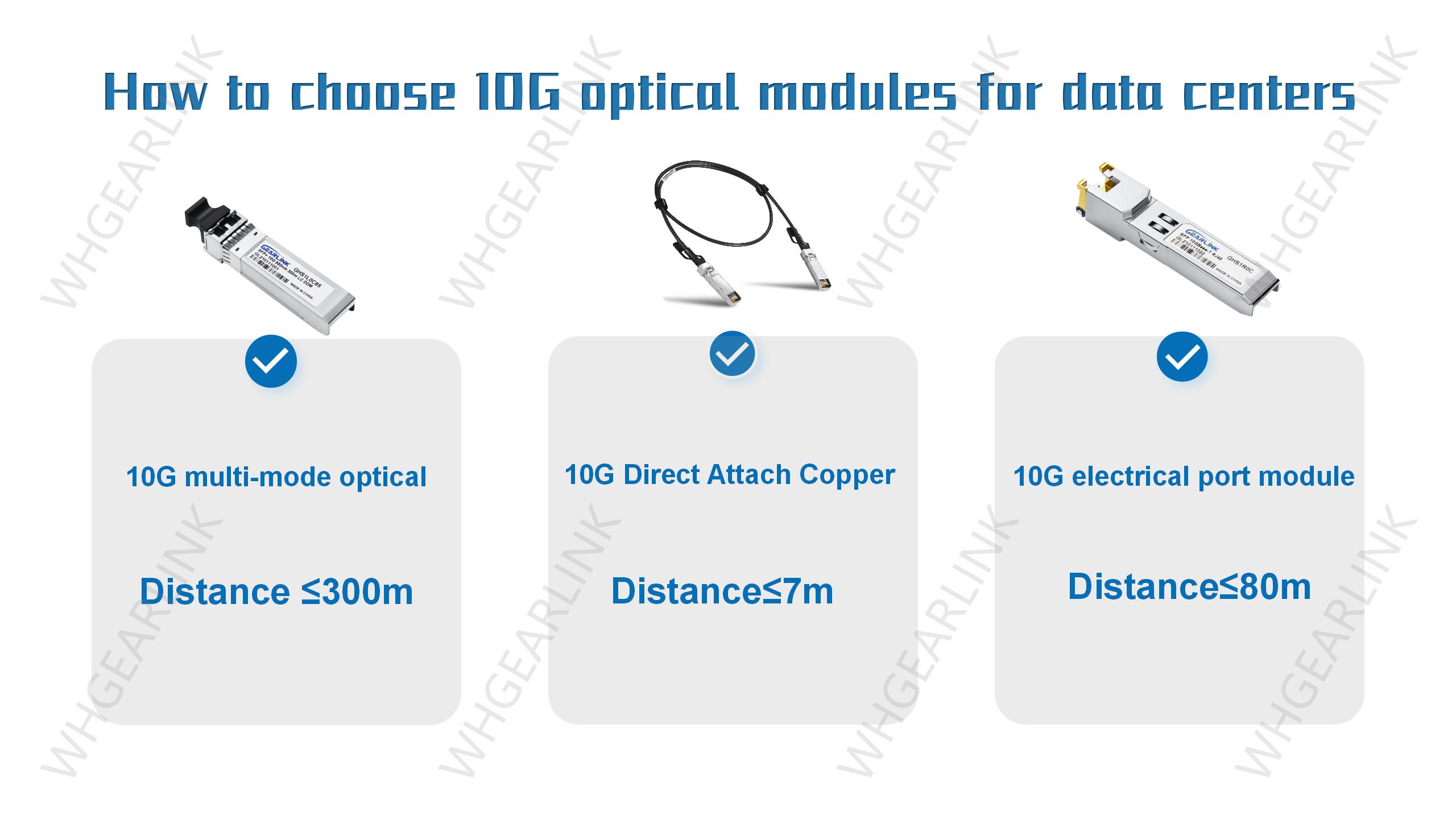
In the network architecture of the data center, choosing the appropriate 10G optical transceiver is crucial. During the selection process, 10G multi-mode optical transceivers, 10G electrical interface transceivers and 10G DAC are three common solutions. The selection of 10G optical transceivers is directly related to the speed, stability and cost-effectiveness of data transmission. During the selection process, we can consider factors such as latency, power consumption, application, and cost. First, let’s take a look at the differences between the three transceivers.
10G multi-mode optical transceivers are widely used in short-distance high-speed transmission, such as in computer rooms of data centers. The 10G multi-mode optical transceiver uses multi-mode optical fiber for transmission, which has lower cost and higher transmission speed. It is usually suitable for data transmission within a distance of 300 meters, such as communication between servers. An important feature of the 10G multi-mode optical transceiver is its low latency, which has obvious advantages in real-time applications in data centers.
10G electrical port transceiver, which uses electrical signals for data transmission, uses Cat6a or Cat7 network cable wiring, and the transmission distance usually does not exceed 100m. The cost of network cabling is lower than that of optical fiber cabling, and the maintenance cost is also relatively low. The most important thing is that the 10G electrical port transceiver can make the most of the existing copper cable structure wiring and save a lot of costs.
10G DAC (Direct Attach Copper), which connects network devices directly through copper cables. 10G DAC performs very well in short-distance high-speed transmission, and its transmission distance is usually between a few meters to more than ten meters. An important advantage of the 10G DAC is its low latency and low power consumption. In addition, 10G DAC is more affordable than 10G multi-mode optical transceivers. However, compared with 10G multimode optical transceiver and 10G electrical interface transceiver, 10G DAC has a shorter transmission distance and also has some limitations.
Latency is one of the key factors in selecting 10G optical transceivers. 10G multi-mode optical transceiver can provide shorter latency because it uses more optical fibers for data transmission. The 10G electrical port transceiver has a relatively large delay because it uses electrical signals for transmission. Additionally, 10G DAC (Direct Attach Copper) typically has lower latency because it is connected directly to the network device.
Secondly, power consumption is another important factor in selecting optical transceivers. 10G multi-mode optical transceiver usually has lower power consumption because it can achieve higher transmission speeds at lower power. The 10 Gigabit electrical interface transceiver usually consumes higher power because it uses electrical signals for transmission. The 10G DAC is at the middle level with moderate power consumption.
In addition, application scenarios are also one of the considerations when choosing 10G optical transceivers. If the data center requires high-speed transmission over short distances such as 300m, 10G multi-mode optical transceivers are a good choice. A 10G DAC is most suitable for a distance of several meters to more than ten meters. If you want to minimize wiring costs in an existing copper cable structure wiring environment, you can consider using a 10G electrical port transceiver.
Finally, cost is also a key factor to consider when selecting optical transceivers. Generally speaking, 10G DAC has the lowest cost because 10G DAC has no photoelectric conversion components. The cost of the 10G multi-mode optical transceiver is slightly higher than that of the 10G DAC. The cost of the 10G electrical port transceiver is relatively high. The electrical port transceiver itself has metallic properties. In order to achieve high anti-interference, shielding measures must be taken, which greatly increases the material cost, and also increases the manufacturing process and cost. In addition, the current usage of 10 Gigabit electrical ports is far less than that of 10 Gigabit multi-mode optical transceivers. Things are rare and expensive, so it is understandable that the price of 10 Gigabit electrical port transceivers is high. The cost of the 10G multi-mode optical transceiver is between the 10G electrical interface transceiver and the 10G DAC.
To sum up, choosing a 10G optical transceiver suitable for data centers must consider factors such as delay, power consumption and application, as well as cost factors. According to actual needs, choosing 10G multi-mode optical transceiver, 10G electrical transceiver or 10G DAC can better meet the needs of the data center.

